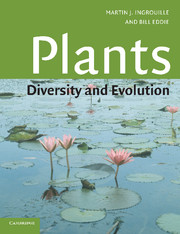Book contents
Chapter 2 - The genesis of form
Published online by Cambridge University Press: 05 June 2012
Summary
The student of Nature wonders the more and is astonished the less, the more conversant he becomes with her operations; but of all the perennial miracles she offers to his inspection, perhaps the most worthy of admiration is the development of a plant or animal from its embryo.
Thomas Henry Huxley, 1825–1895Plant development
Plants undergo an orderly succession of developmental changes (ontogeny) starting with the simple structure of the embryo and ending with the highly complex organisation of the mature plant, senescence and death. At least, this is the zoocentric view of the plant life cycle. In reality it is more complex than that because many plants, by shedding their parts, actually may be said to be constantly dying while they are living. Programmed cell death (PCD), called apoptosis in animals, occurs in the normal life cycle of all plants, for example, during maturation and senescence of leaves, flowers and fruits, and abscission in the regular seasonal cycle of temperate plants during leaf-fall, and as the result of stress. In aquatic and semi-aquatic plants cell death creates air channels that aerate the submerged tissues. In addition, the great propensity for vegetative reproduction gives plants almost immortality. Such serial changes contribute to the unfolding development of the plant as a whole, but they also occur at all levels of organisation, from cells and tissues to organs.
- Type
- Chapter
- Information
- PlantsDiversity and Evolution, pp. 56 - 96Publisher: Cambridge University PressPrint publication year: 2006



